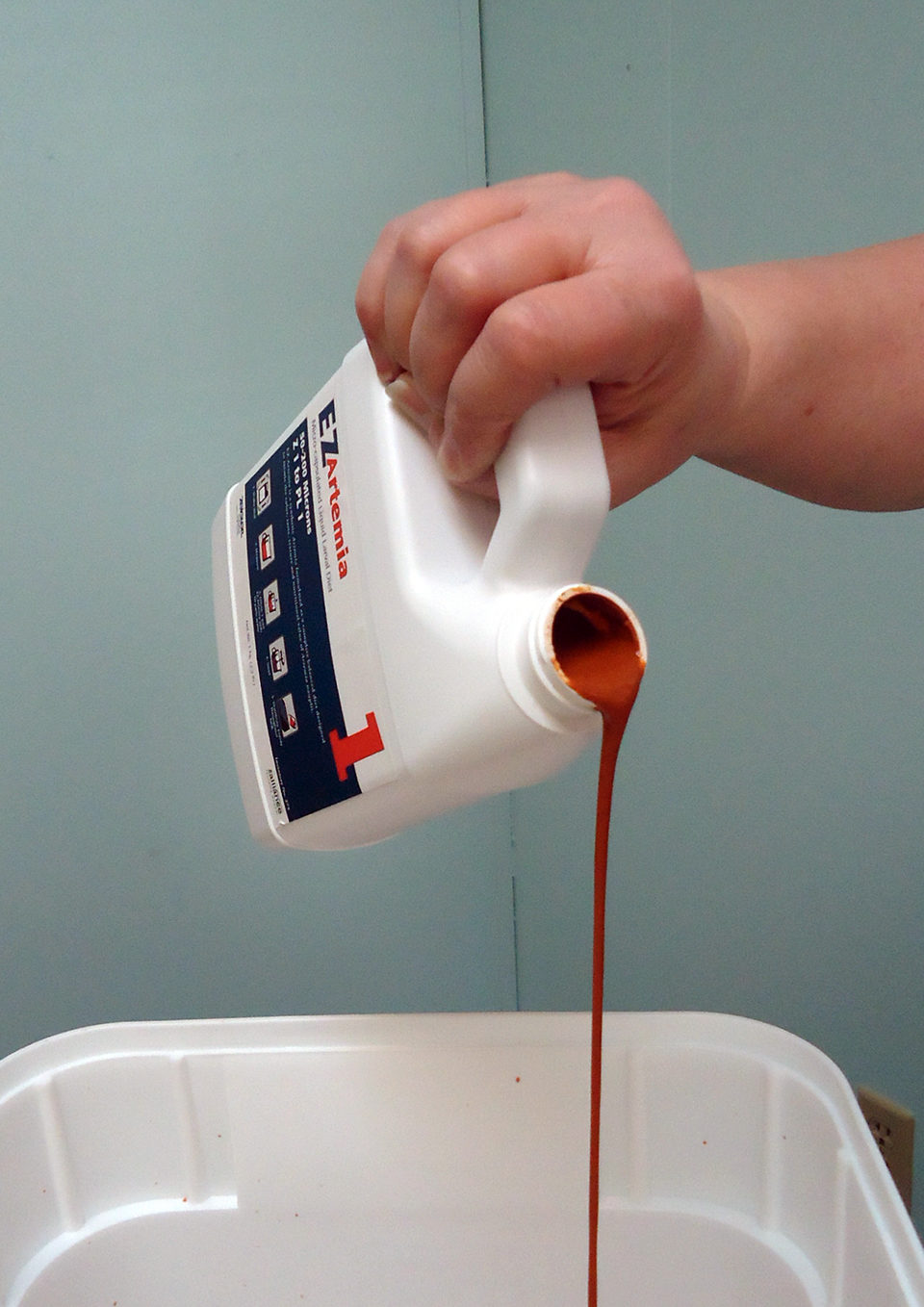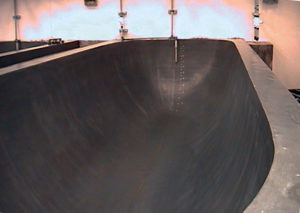Products have consistent nutrient profile, pathogen-free status and no storage or hatch-out concerns

Artemia, or brine shrimp, have become a staple feed item in shrimp larviculture. They are a proven complete feed for shrimp that is easily seen and suspended in the culture water column. Their dormant eggs, or cysts, can be stored for long periods and hatched on demand to provide a convenient live feed for larval fish and crustaceans.
In years past, the aquaculture industry counted on adequate artemia cyst harvests and inventories to allow artemia suppliers to meet market demands. But for the last several years, the worldwide demand for artemia cysts has risen to levels that exceed global supply. Today, as global demand increases, the combination of depleted inventories and unpredictable harvests has resulted in shortfalls in supply much sooner than the industry had anticipated.
Global cyst production
The Great Salt Lake in Utah, USA, has been one of the major suppliers of artemia cysts. In 2011-2012, its cyst harvest reflected 70 percent of the wet weight of the 2010-2011 harvest, but only 55 percent of the dry, processed weight. Cyst harvests in Russia and China were also low for 2011-2012. The cyst harvest in the Ariel Sea returned in 2011-2012, but was not enough to compensate for the overall shortage. There were few cyst reserves anywhere in the world.
In contrast, the 2013-2014 cyst harvest has been superior. Thanks to a drop in demand in Asia due to lower shrimp larvae production in areas affected by early mortality syndrome, this year may be the first in five to show inventories exceeding demand. However, the inconsistency of supply has kept prices at record levels.
Vietnam situation
Vietnam has over 500,000 ha of shrimp farms and over 3,000 hatcheries. In 2012, the hatcheries produced an estimated 70 billion postlarvae of Pacific white shrimp, Litopenaeus vannamei, and black tiger shrimp, Penaeus monodon. This number was up from 25 billion two years previous.
At the start of the 2012 production year, there was no “in-country” artemia cyst reserve from any source in Vietnam. Only cysts imported from Thailand, priced at $110-140/kg, and Vietnam-produced cysts at $200/kg were available in very limited quantities. Many facilities were unable to produce due to the lack of cysts.
For the sustainability of the shrimp aquaculture industry, it became apparent that hatcheries needed an alternative for artemia cysts.
Artemia use

To develop an artificial replacement for artemia in hatcheries, an understanding of how artemia is used in different parts of the word is needed.
In the Eastern Hemisphere, artemia are traditionally fed according to visual macroscopic observations by the technician of available feed in the water. Microscopic observation is generally not used. Also, production tanks normally have flat bottoms and limited aeration, making artificial feed suspension difficult.
For these reasons, there is a very high dependence on live artemia, which is a complete diet that is easily seen and maintained in suspension. The average consumption in Asia is 3-10 kg of 80 percent hatch-out artemia cysts/million shrimp postlarvae produced. To date, has been done little to reduce historic consumption rates.
In the Western Hemisphere, the use of artificial diets is considerably higher. Feeding is based more on frequent microscopic observations of the animals than the water column. Production is done in parabolic tanks with high center aeration specifically designed to maintain all feeds in suspension and reduce dependence on live feeds. Much has been done to lower historic artemia consumption rates in the Western Hemisphere.
Species differences
The majority of artemia cysts are consumed to produce P. monodon and L. vannamei postlarvae (P.L.). Both have different feeding characteristics.
P. monodon are pelagic feeders through P.L.20, feeding up in the water column. They are mainly grown in flat tanks, but are not efficient at feeding off the bottom, making it difficult to feed dry diets to harvest. The shrimp can only feed on what stays in the water column, such as live artemia. It is typical to use 5-10 kg artemia cysts/million postlarvae produced. In 2012, hatcheries paid $1.00-1.50/1,000 P.L. for artemia in Vietnam.
L. vannamei are pelagic feeders only through stage P.L.5. They become benthic feeders at P.L.6 and remain so to harvest, which permits heavy dry diet use in later stages and reduces the amount of artemia needed. They are mainly grown in parabolic tanks until P.L.5.
After P.L.5, artemia cysts are normally cut from feeding protocols, and shrimp feed at the bottom with heavier sinking diets, decapsulated cysts or artemia biomass. In Vietnam, it is typical to use 1-5 kg artemia cysts/million L. vannamei P.L., which cost hatcheries U.S. $0.40-0.60/1,000 P.L. in 2012.
Synthetic artemia
To meet the requirements and sustainability of the shrimp aquaculture industry, commercial synthetic artemia has been developed for use in larviculture. It has proven to be a 100 percent bio-secure replacement for artemia.
The main benefits of using an artificial artemia replacement include a consistent nutrient profile, pathogen-free status and no storage or hatchout concerns. Artificial artemia also have constant availability and pricing, and can be used as a vehicle for immunostimulants, enzymes and probiotics to enhance digestion and improve water quality and animal health.
Field tests have demonstrated high survival in shrimp fed synthetic artemia. The liquid diet is almost neutrally buoyant and formulated to match the nutrient profile of enriched artemia with high highly unsaturated fatty acids content. Artificial artemia has been shown to extend the transport time of shrimp postlarvae by helping maintain good water quality and dissolved-oxygen levels. It is available in multiple particle sizes and can be fed from zoea 1 stage to P.L. at harvest.
Commercial hatchery trial
Two feeding protocols that took into account the types of tanks used in larviculture of L. vannamei were tested. In one study, flat-bottom Asian-style tanks and easily suspended liquid larval feeds with synthetic artemia were used, while the other used low-cost dry diets and synthetic artemia in parabolic American-style tanks. Performed in a Western hatchery that exclusively used synthetic artemia for the past two years, the trials evaluated the dietary impacts of the protocols on shrimp growth and survival in a commercial production environment.
The trial ran for 21 days from N5 to P.L.15 status. Each of the two treatments had three replicates. The rectangular, 20-cubic-meter fiberglass tanks with parabolic design were stocked with nauplii at 160/L. Through P.L.4, the microalga Thalassiosira pseudonana was used at a density of 60,000-100,000 cells/mL. Water temperature was maintained at 30.8 to 31.8 degrees C, and dissolved-oxygen concentrations were 4.5-5.0 mg/L. pH was stable at 8.2 during culture.
Table 1 shows growth and survival data for each treatment. Both treatments gave adequate to superior results for a commercial hatchery using no artemia in feeding protocols. Slightly better growth was seen using dry diets, and better survival was achieved with liquid feeds.
Gervais, Results of commercial hatchery trials, Table 1
| Treatment | Stocking Density | Survival (%) | Size (cm) |
|---|
Treatment | Stocking Density | Survival (%) | Size (cm) |
|---|---|---|---|
| Liquid diet with synthetic Artemia, flat-bottom tanks | 163.00a ± 6.76 | 66.8a ± 5.0 | 0.89b ± 0.03 |
| Dry diet with synthetic Artemia, parabolic tanks | 161.00a ± 4.43 | 62.9a ± 1.0 | 1.18b ± 0.11 |
Since the hatchery closed its artemia department in 2010, the facility has noted increased survival, sustained improvements in water quality and increased hatchery productivity, which have led to decreased production costs and higher profitability.
Pond testing
It is common for shrimp farmers to demand that hatcheries use a certain amount of artemia to guarantee the quality of the shrimp seed. So the question arose: Do P.L. produced with synthetic artemia have the same quality as those produced with live artemia? Two hatcheries produced 6 million postlarvae for a trial. Three million P.L. came from a protocol using synthetic artemia, and the remainder came from a protocol using artemia cysts. The postlarvae were kept in nursery tanks for seven to 12 days prior to stocking into 72 ha of grow-out ponds at a large shrimp farm in Ecuador.
The results in Table 2 show that the postlarvae grown on synthetic artemia entering a nursery system could outperform postlarvae grown on live artemia. There was no significant difference in grow-out pond performance between the two treatments.
Gervais, Pond results for postlarvae produced with Artemia, Table 2
| Treatment | Days in Nursery | Average Survival (%) | Stocking Density (shrimp/m2) | Days to Harvest | Survival (%) | Feed- Conversion Ratio | Harvest Weight (g) | Pond Yield (kg/ha) |
|---|
Treatment | Days in Nursery | Average Survival (%) | Stocking Density (shrimp/m2) | Days to Harvest | Survival (%) | Feed- Conversion Ratio | Harvest Weight (g) | Pond Yield (kg/ha) |
|---|---|---|---|---|---|---|---|---|
| Synthetic Artemia | 10 | 92 | 10.1 | 93 | 65.9 | 1.03 | 11.3 | 748.9 |
| Live Artemia | 8 | 80 | 10.4 | 96 | 67.7 | 0.97 | 10.7 | 745.7 |
(Editor’s Note: This article was originally published in the May/June 2013 print edition of the Global Aquaculture Advocate.)
Authors
-
Neil F. Gervais, Jr.
Aquaculture Technical Manager
Zeigler Bros., Inc.
P. O. Box 95
Gardners, Pennsylvania 17324 USA -

Thomas R. Zeigler, Ph.D.
Senior Technical Advisor
Past President and Chairman
Zeigler Bros., Inc.
P. O. Box 95
Gardners, Pennsylvania 17324 USA
Tagged With
Related Posts

Innovation & Investment
Artemia, the ‘magic powder’ fueling a multi-billion-dollar industry
Artemia, microscopic brine shrimp used as feed in hatcheries, are the unsung heroes of aquaculture. Experts say artemia is still inspiring innovation more than 50 years after initial commercialization. These creatures are much more than Sea-Monkeys.

Health & Welfare
A holistic management approach to EMS
Early Mortality Syndrome has devastated farmed shrimp in Asia and Latin America. With better understanding of the pathogen and the development and improvement of novel strategies, shrimp farmers are now able to better manage the disease.

Health & Welfare
Acclimating shrimp postlarvae before pond stocking
Shrimp postlarvae acclimation before stocking into the various growout systems (ponds, raceways, tanks) is a critical – and often overlooked, sometimes taken for granted – step in the shrimp culture process. Various water quality parameters should be changed slowly so that the young shrimp have the time to gradually adapt to the new conditions.

Health & Welfare
Advances in intensive copepod production technology
Research at the Oceanic Institute has been successful in overcoming bottlenecks associated with rearing small-mouthed fish larvae by finding a suitable first feed. Early work on the calanoid copepod Parvocalanus crassirostris focused on parameters necessary for successful maintenance of stock cultures.


